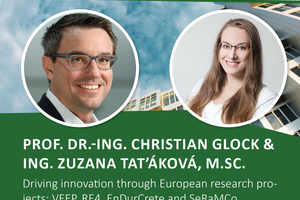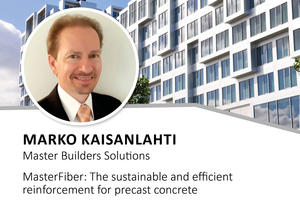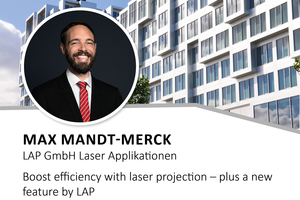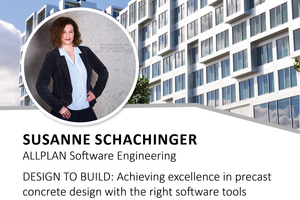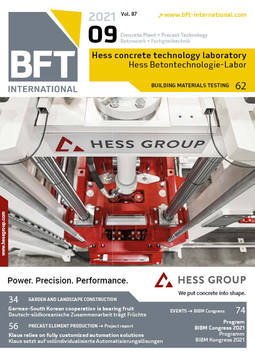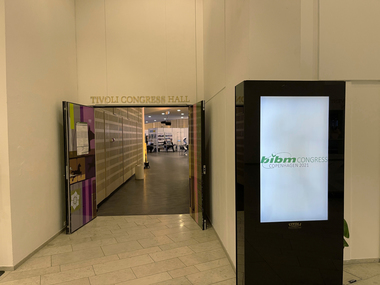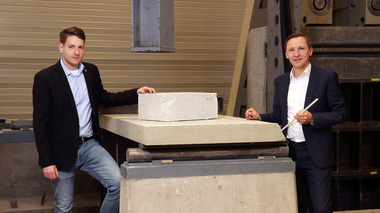Advanced techniques in prefabricated concrete
Moving construction products industry in a digitalised construction
(Christophe Sykes)
From drones to robots, from BIM to 3D printing, there is a lot of talk of a revolution in construction whilst we are more used to a reliable, validated evolution.
Who are the new actors? How will we ensure safety and liability? Where does sustainability and circularity fit in with these digital tools?
No clear answers yet but plenty to talk about and to assess as the European Institutions place construction in their top three priorities with digitalisation as target.
Driving innovation through European research projects: VEEP, RE4, EnDurCrete and SeRaMCo
(Prof. Dr.-Ing. Christian Glock & Ing. Zuzana Tat´áková, M.Sc.)
About 50 % of primary raw materials in Europe are used in the construction sector whereas at the same time more than a third of all waste is generated. Given the fact that primary raw materials are limited, the project SeRaMCo – Secondary Raw Materials for Concrete Precast Products - has created innovative solutions and ways to increase the use of recycled aggregates in the real circular economy. Herby the focus is laid on the complete life-cycle from demolition up to prefabricated elements and first pilot projects. The presentation will give an overview of the project results.
RE4 is a collaborative research project of 13 partner institutions from science and industry funded under the European Union’s Horizon 2020 research and innovation programme. The main purpose of project was to develop a RE4 prefabricated energy-efficient building concept that can be easily assembled and disassembled for future reuse, containing up to 65% in weight of recycled materials from CDW (ranging from 50% for the medium replacement of the mineral fraction, up to 65%). The reusable structures ranged from 15-20% for existing buildings to 80-90% for the RE4 prefabricated building concept.RE4’s success was built on four main “pillars”: maximising the amount of valuable CDW recovered; designing reusable building components; improving CDW management through digitization; and increasing the acceptance of CDW-based products among the end-users. The project has attracted broad interest from the technical and general communities, aided by international recognition like the Hans Sauer Award 2020, a best practices booklet and extensive coverage in scientific publications. Additionally, the RE4 project has been showcased by the EU Commission as a Success Story of the European H2020 programme. The project website was also among three finalists of the EU WEB AWARDS 2020.
The EnDurCrete Project aims to develop a new cost-effective sustainable reinforced concrete for long lasting and added value applications. The concept is based on the integration of novel low-clinker cement including high value industrial by-products, new nano and micro technologies and hybrid systems ensuring enhanced durability of sustainable concrete structures with high mechanical properties, self-healing and self-monitoring capacities.
Focus of the VEEP project was the Cost-Effective Recycling of CDW in High Added Value Energy Efficient Prefabricated Concrete Components for Massive Retrofitting of our Built Environment. The ambition of the VEEP project related to different aspects, new processes, new materials & products development:
Technologies:
Advanced Drying Recovery (ADR) redesigned for modular construction and efficient onsite transportability and light weight (LW) concrete recycling;
Innovative mobile Heating-Air classification System (HAS) Pilot Plant (3ton/hour);
Combined ADR + HAS technology for simultaneous production of recycled concrete particles;
Ultra-fine wet grinding and health-safety refining technology.
Materials:
new green NW concrete containing at least 75% C&DW recycled materials
new green LW concrete recipes containing at least 75% of C&DW recycled materials.
new aerogel composites formulations by incorporating at least 80% (by weight) silica containing C&DW recycled material guaranteeing 40% reduction in energy consumption and costs (respect to existing solutions)
Products: Two novel cost-effective energy efficient precast concrete panel solutions containing high level (>75% by weight) of C&DW recycled materials.
Expression by Digital Fabrication – case Fazer
(Kimmo Lintula)
There is ever growing need for new tools for architectural expression and expertise concerning better use of material sources and in adaptive reuse of embedded energy in building stock.
The presentation will share our experience in digital fabrication based on a hands on approach using material and geometrical qualities of prefabricated fibre-concrete.
(Fazer Offices case study; digitally fabricated concrete envelope (K2S Architects, Lintula, Sirola, Summanen))
MasterFiber: The sustainable and efficient reinforcement for precast concrete
(Marko Kaisanlahti)
Replacing steel reinforcement with MasterFiber structural polymeric fibers reduces CO2 footprint of precast elements as well as enhances their durability by allowing smaller crack widths and lowers the risk of steel oxidation.
Using polymeric fibers also improves process efficiency and enables savings in energy, material and labor costs.
BASF has prepared a sophisticated and easy-to use calculation tool, Civil MB, for designing of precast elements with fiber reinforced concrete.
Boost efficiency with laser projection – plus a new feature by LAP
(Max Mandt-Merck)
Excessive manual work tasks can cause bottlenecks and cause lower availability levels in production.
Laser projection systems apply a significant boost in efficiency in precast concrete plants. The integration of laser systems results in significantly reduced set-up and processing times at the work stations, thus increasing component quality and plant productivity while keeping cost low.
Still, even further potential can be unlocked. A new feature added to these systems opens up additional new possibilities for quality assurance.
DESIGN TO BUILD: Achieving excellence in precast concrete design with the right software tools
(Susanne Schachinger)
Designing and planning precast concrete buildings requires software with special functionalities. With the right software tools, element design, reinforcement detailing, shop drawings, data supply to production and commercial systems and much more can be done incredibly fast and precisely.
In her presentation, Susanne will give an insight into the automated workflows of Planbar and Tim, the leading precast design and planning software solutions.


